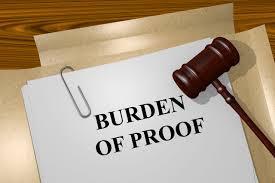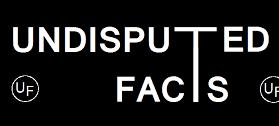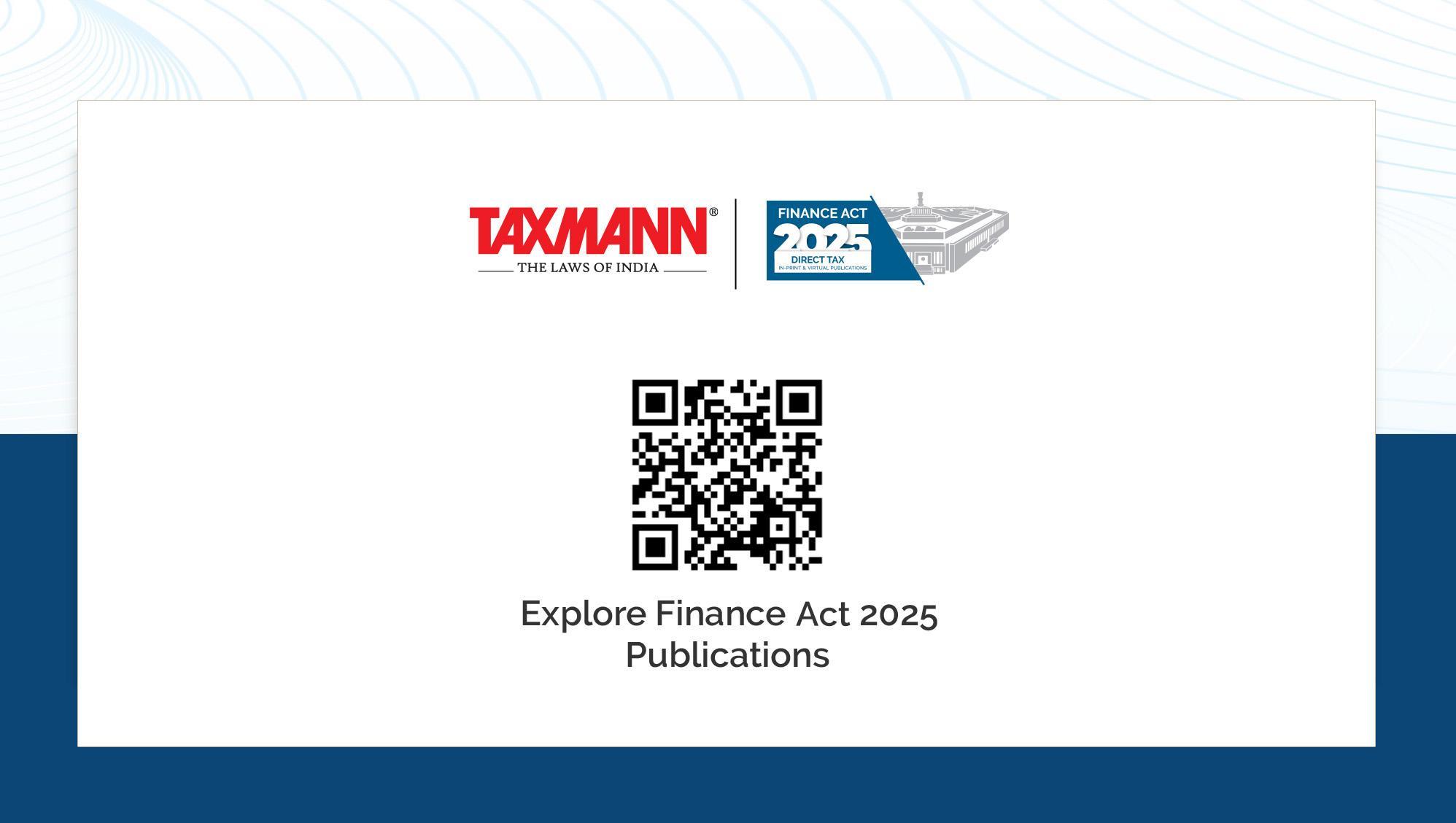
GST & It’s Implications with Bharatiya
Sakshya Adhiniyam, 2023
(Indian Evidence Act)
Presentation by : CA Sunnay Jariwala
Organised by : TAXMANN

1. Consideration in GST:


(Indian Evidence Act)
Presentation by : CA Sunnay Jariwala
Organised by : TAXMANN

1. Consideration in GST:
Non- Monetary Consideration
• Can be monetary or non-monetary (e.g., barter or exchange).
2. Valuation Rules:
• If price is not the sole consideration, GST valuation rules (Section 15(4)) apply.
3. Barter vs. Exchange:
• Barter: Non-monetary exchange of goods/services.
• Exchange: Often involves immovable property.
4. Accounting Note:
• Non-monetary transactions aren’t recorded traditionally but valued for GST.
5. Payment Conditions:
• GST laws test if “payment” applies to monetary or non-monetary consideration.

1. Definition of Deemed Supply:
• When an agent handles goods within the scope of their agency, the transaction is treated as:
• Principal to Agent: Principal is deemed to sell goods to the agent.
•Agent to Third-Party: Agent is deemed to sell goods to the third-party.
2. Reverse Scenario:
• When the agent buys goods from a third-party, it is treated as:
• Third-Party to Agent: Third-party sells goods to the agent.
• Agent to Principal: Agent sells goods to the principal.
3. Legal Basis:
• Governed by Paragraph 3, Schedule II of the CGST Act : Any treatment or process which is applied to another person's goods is a supply of services
4. Impact on Records:
• Financial Records: Show agency commission as income.
• GST Records: Reflect “purchase and sale” with associated input tax credit (ITC).


Sec 1 : Short title, application and commencement
Indian EvidenceAct, 1872 (IEA) provided that it extended to the whole of India, whereas Bharatiya SakshyaAdhiniyam, 2023 (BSA) excludes this provision of territorial extent. This means the admissibility of evidence digitally generated even outside the borders of India.
Sec 2 : Definitions and Interpretations
Interpretation clauses, which include words and expressions and are interpreted in paragraphs in the IEA, are now defined under Section 2(1): Definitions, where each word and expression is given individual alphabetical clauses. BSAexcludes the interpretation of "India" previously given in Section 3 of the IEA.

Sec 2 (1) (b) : “ conclusive proof ”
"Act" is replaced with "Adhiniyam". Wherever the word “Act” is used in IEAthe word “Adhiniyam” is used in BSA. Word "means" is added.
The court cannot allow any evidence to be presented for the purpose of disproving the second fact once the first fact, which is declared as conclusive proof, has been proven.

Sec 2(1)(c) : “ disproved ”
Words "Afact is said to be disproved" are replaced by "in relation to a fact, means". That is The Court, after considering all evidence, either believes the fact does not exist or considers its non-existence so probable that a prudent person would act on that assumption.
Sec 2 (1) (d) : “ document ”
The words "or otherwise recorded" and "or any other means", "and includes electronic and digital records" are added. This section defines "document" broadly, encompassing any matter recorded on a substance by any means, including letters, figures, marks, or electronically and digitally.

Sec 2 (1) (e) : “ evidence ”
"Words" "including statements given electronically" in (e)(i) and "or digital" in (e )(ii) are added.It defines "evidence" broadly, encompassing all statements (including those given electronically) permitted or required by the court, and all documents, including electronic or digital records, produced for the court's inspection.
Sec 2 (1) (f) : “ fact ”
Word "man" is replaced by "person" in illustrations and illustration (e) -"That a man has a certain reputation, is a fact" is now excluded in BSA. It defines "fact" broadly as encompassing anything, state of things, or relation of things perceptible by the senses, or any mental condition of which a person is conscious.

Sec 2 (2) : Words and expressions
Newly added. “Words and expressions used herein and not defined but defined in the Information TechnologyAct, 2000 (21 of 2000), the Bharatiya Nagarik Suraksha Sanhita, 2023, and the Bharatiya Nyaya Sanhita, 2023, shall have the same meanings as assigned to them in the said Act and Sanhitas.”

Words "not to be proved" are excluded from heading. Section 23(1) of the Bharatiya Sakshya Adhiniyam (BSA), 2023, which replaces Section 25 of the Indian Evidence Act, 1872, states that confessions to police officers are generally inadmissible, with the exception of information leading to the discovery of a fact.
Sec 32 : Relevancy of statements as to any law contained in law books including electronic or digital form
Words "including in electronic or digital form" are added in heading as well as in the main text of the section. It addresses the relevancy of statements regarding any law contained in books, including electronic or digital forms, when a court needs to form an opinion on the law of a country.

Sec 24 : Consideration of proved confession affecting person making it and others jointly under trial for same offence
Anew explanation II is added, mentioning that "Atrial of more persons than one held in the absence of the accused who has absconded or who fails to comply with a proclamation issued under Section 84 of the Bharatiya Nagarik Suraksha Sanhita, 2023, shall be deemed to be a joint trial for the purpose of this section."
Section 24 of the Bharatiya Sakshya Adhiniyam (BSA) 2023, which corresponds to Section 30 of the Indian Evidence Act, 1872, allows a court to consider a confession made by one accused, affecting himself and others jointly tried for the same offense, as evidence against all those accused.

Sec 31 : Relevancy of statement as to fact of public nature contained in certainActs or notifications
Words "anyAct of Parliament (of the United Kingdom) or in any CentralAct, ProvincialAct or a StateAct or in a Government notification or notification by the Crown Representative appearing in the Official Gazette or in any printed paper purporting to be the London Gazette or the Government Gazette of any Dominion, colony, or possession of his Majesty is a relevant fact." are replaced by "any Central Act or StateAct or in a Central Government or State Government notification appearing in the respective Official Gazette or in any printed paper or in electronic or digital form purporting to be such Gazette, is a relevant fact".
In the context of the Bharatiya Sakshya Adhiniyam (BSA) 2023, Section 31, concerning the relevancy of statements regarding facts of public nature, establishes that statements found in Central or State Acts, government notifications, or their official publications are considered relevant facts for the court when determining the existence of such facts.

Sec 35 : Relevancy of certain judgments in probate, etc., jurisdiction.
The word "Tribunal" is added. Paragraph "Such judgment, order or decree is conclusive proof that" is given as subsection (2) and conditions under this are enumerated as (i), (ii), (iii), and (iv). The word "that" is excluded.
It establishes that final judgments, orders, or decrees from competent courts or tribunals in probate, matrimonial, admiralty, or insolvency matters are relevant when the existence of a legal character or title to a specific thing is at issue.

Words "or any other field" are added. Thus, Opinion of experts in a field other than foreign law, or of science, or art are also relevant facts when Court has to form an opinion.
Section 39(1) of the Bharatiya Sakshya Adhiniyam (BSA), 2023, concerning expert opinions, states that when a court needs to form an opinion on matters like foreign law, science, art, or handwriting/fingerprint identity, the opinions of specially skilled persons (experts) in those fields are considered relevant facts.


•Burden of Proof: The person making an assertion must prove it.
•Assertion: A claim or statement that something is true.
•Responsibility: The person who makes a claim must back it up with evidence.
•False Without Proof: If the proof is not provided, the claim can be considered false.
•Who Must Prove: The person making the claim (the party asserting) is responsible for proving it


• Proof Needed for Undisputed Facts: If a fact is not challenged, no proof is required.
• Facts as Foundation: Facts form the basis of any claim or statement made by either party.
• GST Context:
- Allegations supported by strong, unquestionable evidence become facts.
- Allegations that are not disputed are automatically accepted as facts.

•No Burden on Taxpayer for Omission: If the details of GSTR-3B filing dates are clear and undisputed on the Common Portal, the taxpayer is not required to explain the interpretation of Section 16(4).
•Undisputed Information: Once the filing details are evident and uncontested, the taxpayer doesn't need to provide further explanation.

• No Provision for 'Vexatious Search': GST law does not recognize or provide for "vexatious searches.“
• Bona Fide Presumption: Searches are assumed to be conducted in good faith (as per Section 119 of BSA,2023).
• Demand for Justice: This emphasizes the need for the taxpayer to formally demand justice when exceptional powers (like searches) are being used.



•Both Interpretations Can Be Incorrect: The interpretation by the taxpayer and the one by the Revenue may both be wrong.
•Purpose of the Notice: The notice issued is not for adjudicating the right interpretation, but to test the alternate interpretation presented by the Revenue.
•Role of Adjudicating Forums:
- Adjudicating or appellate forums do not choose between the taxpayer's or Revenue's interpretation.
- They only determine if the interpretation presented by the Revenue is legally and factually sustainable.
•Due Process in GST:
Due process is not about discovering the "truth," but testing the validity of the alternate interpretation to challenge the taxpayer's self-assessment.

FACT means and includes ---
1. Anything perceived by the senses (e.g., sight, hearing, touch).
2. Any mental condition that a person is aware of (e.g., a person’s thoughts or feelings).
•Illustrations:
(i) The arrangement of objects in a certain order and place is a fact.
(ii) A person hearing or seeing something is a fact.
(iii) A person saying certain words is a fact.

•ANY facts that directly affect the existence, nature, or extent of a right, liability, or disability in a case.
•These facts must follow logically from other facts in the case and are critical to the outcome.
•Explanation: When a court records a specific issue of fact in a case, the fact being asserted or denied is considered a "fact in issue."
















• Whenever it is provided by this Adhiniyam that the Court may presume a fact, it may either regard such fact as proved, unless and until it is disproved or may call for proof of it;
• A fact is said to be not proved when it is neither proved nor disproved;
• A fact is said to be proved when, after considering the matters before it, the Court either believes it to exist, or considers its existence so probable that a prudent man ought, under the circumstances of the particular case, to act upon the supposition that it exists;
• A fact is said to be relevant to another when it is connected with the other in any of the ways referred to in the provisions of this Adhiniyam relating to the relevancy of facts;
• Whenever it is directed by this Adhiniyam that the Court shall presume a fact, it shall regard such fact as proved, unless and until it is disproved


1. Scope of Evidence:
•Evidence can be provided for:
•Facts in issue.
•Relevant facts as defined by the law.
2. Restriction:
•Evidence cannot be presented for facts prohibited by legal provisions, such as civil procedure laws.
3. Explanation:
•This rule ensures evidence is limited to legally permissible facts.

1. Definition:
• Facts not directly in issue but closely connected to a fact in issue or a relevant fact are considered relevant.
2. Part of the Same Transaction:
• These facts form part of the same transaction, even if they:
• Occurred at different times.
• Took place in different locations.
3. Purpose:
. Ensures the full context of a transaction is considered to establish a clear understanding of the matter.

•Relevance of Business Practice:
• If there’s a question about whether something was done (e.g., a letter was sent), the usual business practice that would naturally include that action can be important.
Illustrations:
1.Example 1: Was a letter sent?
1. If letters are always sent when placed in a specific location, and a letter was placed there, it’s relevant to assume it was sent.
2.Example 2: Did a letter reach someone?
1. If the letter was posted in the usual way and not returned as undelivered, this supports the idea that it reached the person.
Key takeaway:
Business routines and practices can help prove whether something happened.

•Relevance of Account Book Entries:
• Entries in regular business books (including electronic records) are relevant when they relate to an issue the court is examining.
•Limitations:
• Important: These entries alone cannot be used to prove liability.
• Need for Additional Evidence: The court requires more than just the entries to prove someone's responsibility.
Illustration:
•Example:
• A sues B for ₹1,000 and presents account book entries showing B owes the amount.
• These entries are relevant, but not enough on their own to prove the debt. Additional evidence is required.
Key takeaway:
Account book entries can be important but cannot alone establish legal responsibility.

•No Need to Prove Admitted Facts:
• If the parties or their agents agree to admit certain facts, those facts do not need to be proven during the hearing.
•Ways Facts Can Be Admitted:
• Facts can be admitted either:
• At the hearing: Both parties agree during the hearing.
• Before the hearing: The parties agree in writing before the hearing.
• By pleadings: The parties are considered to have admitted facts through their formal written statements (pleadings).
•Court’s Discretion:
• The court can still require the admitted facts to be proven through other evidence if it chooses.
Key takeaway:
If both parties agree on certain facts, those facts don’t need to be proven, but the court can still ask for proof if necessary.

• Facts and Proof:
• Facts are statements or claims that must be proven in legal matters.
• Undisputed facts do not require proof.
• Taxation Presumption:
• When there are two possible ways to treat taxes, and the taxpayer chooses the more beneficial one, the law may assume this interpretation works against the taxpayer.
• The burden of proof lies with the Revenue (tax authorities) to challenge the taxpayer's self-assessment.
• The taxpayer doesn’t need to disprove anything, but may still face challenges in the process.
Key takeaway:
Disputed facts need proof; in tax matters, the law may favor the tax authority’s interpretation if the taxpayer chooses a more beneficial tax treatment.

Assessment proceedings, etc., not to be invalid on certain grounds. [ Sec 160(2) of CGSTAct]
Service of Notices, Orders, or Communications
• Covers how notices, orders, or communications should be served under the GST Act.
No Challenge if Acted Upon
• If the person receiving the notice, order, or communication has already acted on it, they cannot later question the service of that notice, order, or communication.
No Challenge in Earlier Proceedings
• If the service of notice, order, or communication has not been disputed in earlier proceedings (whether initiated, continued, or completed), it cannot be questioned later.
Objective
• Prevents delays and disputes over the service of notices and ensures smooth processing of GST-related actions.

• Every registered person shall self assess the taxes payable under this Act and furnish a return for each tax period as specified under section 39.

• Where any person claims that he is eligible for input tax credit under this Act, the burden of proving such claim shall lie on such person.

Taxing Statutes & Provisional Attachment - Apex Court Judgment


•Marginal notes provide some indication of the Parliamentary intent.
•Section 83: "Provisional attachment to protect revenue in certain cases."
• Provisional: Temporary measure, aiding a larger process.
• Protecting Revenue: The primary goal is safeguarding government revenue.
• Certain Cases: Conditions must be fulfilled for provisional attachment.
• See Rule 159.
•Statutory Construction: Taxing statutes must be interpreted based on plain language.
•The purpose of the provision should guide its interpretation.
•An interpretation that supports the purpose and is consistent with the statute’s wording must be preferred.

3. Law on Provisional Attachment
• When can provisional attachment be ordered?
• Only when proceedings are pending under any of the following sections:
Sections 62, 63, 64, 67, 73, or 74.
• Who can order the attachment?
• The Commissioner has the authority to order provisional attachment.
• Condition for attachment:
• The Commissioner must be of the opinion that attachment is necessary to protect government revenue.
• Order for Attachment:
• The provisional attachment order must be in writing.
• What can be attached?
• Any property, including bank accounts of the taxable person.
• Rules for Attachment:
• The procedure for provisional attachment must be specified in the rules framed under the statute.
4. Outcome of the Case
• The court allowed the appeal and set aside the provisional attachment order.

1. Focus on Digital Evidence:
• Given the emphasis on digital evidence in the BSA 2023, tax litigators must be adept at presenting digital records such as financial statements, emails, and digital tax returns.
2. Leverage Presumptions:
• Litigators can strategically use these presumptions to reduce the burden of proof, especially in cases involving tax assessments, where the authenticity of records like invoices or contracts might be disputed.
3. Expert Testimonies:
. Expert accountants, valuers, or economists can offer critical insights that influence tax assessments and judgments.

4. Admissibility of Reconstructed Records:
• Litigators can strategically present reconstructed financial records or digital audit trails as part of their defence or claim.
5. Use of Cross-Border Evidence:
• Litigators must be prepared to navigate the process of submitting foreign evidence, especially in cases of transfer pricing or international tax disputes.
6. Adherence to Procedural Compliance:
. Non-compliance with procedural aspects can lead to the exclusion of critical evidence, so ensuring proper certification and chain of custody is key.

7. Advising on Alternative Dispute Resolution (ADR):
• Litigators can use mediation or arbitration as an avenue to resolve tax disputes, particularly in cases involving complex factual disputes over income, deductions, or transfer pricing.
“Conclusion”
Tax litigation under the Bharatiya Sakshya Adhiniyam 2023 requires adapting to modernized standards of evidence. Mastering digital evidence, leveraging presumptions, relying on expert testimonies, and adhering to procedural compliance will be crucial for successful outcomes in tax-related cases

1. Advocacy in Digital Evidence:
• Legal professionals with expertise in cyber law, digital forensics, and technology-driven evidence will be in high demand. Advocates can establish practices focusing on the admissibility of digital evidence, forensic analysis of electronic devices, and data recovery.
2. Admissibility of New Forms of Evidence:
• Litigators can explore specialized legal services around the handling, presentation, and authenticity of modern forms of evidence. Experts in data analysis and evidence verification can partner with law firms to provide specialized advisory services to clients.
3. Increased Role of Expert Testimonies:
. Litigators can tap into niche areas of expert witness services and create a robust network of experts across various fields, ensuring the availability of credible and skilled individuals who can support litigation.

4. Handling of Presumptions:
• Lawyers who specialize in criminal and commercial litigation can develop new strategies for leveraging these presumptions to benefit their clients. A better understanding of these provisions will lead to faster resolution of cases and reduced litigation costs for clients.
5. Impact on Criminal Trials:
• Criminal defence attorneys and prosecutors alike can explore new avenues for strategic litigation, especially in cases involving complex investigations. Litigators can also offer services related to the challenges of new evidentiary standards in criminal cases.
:
. Litigators can capitalize on the growing trend of ADR, helping clients navigate the nuances of evidence admissibility in alternative forums, alongside traditional courtrooms.

7. Emphasis on Procedural Compliance :
• This opens up opportunities for legal professionals to offer services related to evidence management and trial preparation. Specialized paralegal and consultancy firms can be set up to assist lawyers in organizing evidence, maintaining compliance with new rules, and managing complex cases involving voluminous documents.
8. Cross-Jurisdictional Litigation:
• Lawyers involved in international disputes will need to acquire skills in navigating crossjurisdictional evidentiary challenges. Law firms that focus on international trade, finance, or human rights cases will benefit from these provisions
Modernizing Evidence in Civil Cases:
. Litigators focused on civil cases can leverage this shift to provide faster services to clients, particularly in sectors like real estate, intellectual property, and family law.

• Law schools, institutes, and online education platforms can offer specialized courses in the 2023 Evidence Act. Similarly, law firms may offer internal training for their staff to ensure that they stay ahead in the evolving legal landscape.
“Conclusion”
The Bharatiya Sakshya Adhiniyam 2023 introduces a wealth of new opportunities for litigators, law firms, and other legal professionals. Whether it’s handling digital evidence, leveraging new presumptions, navigating international evidence, or advocating in specialized areas like cybercrime or financial disputes, the changes in this Act create a dynamic landscape for legal professionals to explore.

ANKITHA JOY D/O JOY AUGUSTINE @ AUGUSTHY – Appellant Versus
JOY AUGUSTINE @ AUGUSTHY S/O AUGUSTHY – Respondent
Decided On : 19-07-2024
In adversarial litigation, the burden of proof generally lies with the party asserting the affirmative of the issue. However, an exception to this rule is provided under Section 109 of The Bharatiya Sakshya Adhiniyam, 2023 (formerly Section 106 of the Indian Evidence Act, 1872), which shifts the burden of proof to the party who has exclusive knowledge of the relevant facts. Only the party in possession of special knowledge can reveal these facts, and to ensure fairness in judicial proceedings, such a party is held accountable for disclosing them. If the party with exclusive knowledge fails to provide sufficient evidence, the court may draw an adverse inference against them.

In Smt. Meena Kumari Sinha v. M/s Maruti Suzuki India Ltd. & Others, the Jharkhand High Court addressed the admissibility of secondary evidence under the Indian Evidence Act, 1872. The petitioner sought to admit photocopies of bank drafts and money receipts as secondary evidence, but the trial court rejected this, citing a lack of certification from the issuing bank, mistakenly applying Section 65-B, which pertains to electronic records. The High Court clarified that the documents were physical, not electronic, and thus did not require certification under Section 65-B. It directed the trial court to reconsider the petitioner's request under Section 65, which applies to physical documents. This ruling emphasizes the correct application of legal provisions for admitting secondary evidence.

• DIN
• PROPER OFFICER
• WHICH SECTION
• WHAT CAN BE ASKED.
• VALID SIGNATURE
• LIMITATION PERIOD
• FORMAT OF NOTICE
• FORM IS PROPERLY FILLED UP
• ISSUED ALSO TO VALID DISTINCT PERSON
• MODE OF SERVICE OF NOTICE, CASE LAWS DISCUSSED.
• LOOKOUT FOR THE ALLEGATION MADE.
• PHONE CALLS DISCUSSIONS.

POINTERS TOWARDS REPLY OF A NOTICE :
• Brief Reply
• To the Point
• Accept/ Dispute the Demand.
• Check on the allegations – counter them.
• Throw Light on Sec 160 (2)
• Take Shelter under Specific Sections of BSA,2023.
• State the relevant facts.
• Dispute the Stand mentioned in the Notice.
• See for Deficiencies in the Notice

• Reply on Merits
• Check out whether the Revenue has given proof for the allegations made.
• Eg – GST Rate 18/12% - Let the Revenue prove it first.
• Take a Clear Stand. Communicate tax payer’s claim and defend their stand.
• Be Cautious while introducing newer facts or materials.
• Statements on Oath – Retraction.
• Position of Law
• Circulars/ Clarifications/ FAQ’s.
• Without Prejudice
• Conclusion

(a) Introduction of the case
(b) Legal frame work
(c) Factual statement and appreciation of evidences
(d) Discussion, facts and legal frame work,
(e) Discussion on Limitation
(f) Calculation of duty and other amounts due
(g) Statement of charges
(h) Authority to adjudicate.
• SOURCE : CIRCULAR

• SCN is the Foundation - Gorkha Security Services vs. Government of NCT of Delhi [2014] 8 taxmann.com 717 (SC)
• Purpose of the show cause proceeding is meant to give a person proceeded against a reasonable opportunity of making his objection against the proposed charges as indicated therein as observed by the Hon’ble Supreme Court in the case of Khem Chand Vs. Union of India Civil Appeal No. - 353 of 1957 Dated 13-12-1957. This judgment was also considered by the Apex Court in Oryx Fisheries P. Ltd. Vs. Union of India reported in 2011 (266) E.L.T. 422 (S.C.),” the Court ruled.
• New Demand Positions cannot be entered in the order.

• If under Best Judgment – Taxing ingredients, Assumptions to Taxable Income
• Usage of word “Appears” at times – Does indicate due investigation or proper procedures with Evidential proof or Reason to Belief is not followed.
• SCN does not indicated under which Section or Provision of Law is it required.
• Personal Hearing
• Allegation – Tax has escaped/ not paid –
• No inference towards type of taxable supply, whether falling under Sch or Exemptions List, Whether Income actually arised.

• 26AS VS 3B – Income Tax Accounting Policies, Taxability Norms –Advances.
• Relevant Case Laws
• Case of Nazir Ahmad v. King Emperor Decided on 20-1-1936 that:
”When a statute requires a thing to be done in a particular manner, it must be done in that manner or not at all.”
• Non speaking in regards for Classification.
• Taxing Ingredients to be fulfilled.
• Need Proper Base backed by evidence to claim and prove the allegations.
• No new information can be asked for.
• Issue of SCN is the end of Investigation from the Revenue Side.

• Take Shield under Evidence Act
• Onus of Proof.
• Relevant Board Circulars/ Instructions to be followed.
• Limitation Period
• Cum Tax Benefits – Eg discussed yesterday.
• Plead.
• Relief Prayer.

In this case the Supreme Court issued the following guidelines for courts, while writing orders and judgements. Guidelines are only illustrative and not exhaustive.
1. Nothing should be written in judgement/order, which may not be germane to the facts of the case. It should have a corelation with the applicable law and facts.
2. After draft preparation – Necessary to go through same to check if essential point has escaped decision.
3. Ultimate finished judgement/order should have flow and perfect sequence of events, which would continue to generate interest in the reader.
4. Not to load it with all legal knowledge as citation of too many judgements creates more confusion rather than clarity. Leading judgements first and then latest judgement in which all previous judgements have been considered, should be mentioned.
5. Language should not be rhetoric.
1. After conclusion of argument, endeavour ahould be made to pronounce the judgement at earliest and not beyond period of 3 months. Keeping it pending for long time sends wrong signals to the litigations and the society.

• Directions for no recovery same day at the time of search/inspection.
• DRC 03 to be filed voluntarily, but after 1 day.
• Complain can be filed by the assesse.
• DUE PROCESS OF LAW
• Juhi Industires P Ltd Vs State of Jharkhand [2022] 141


















